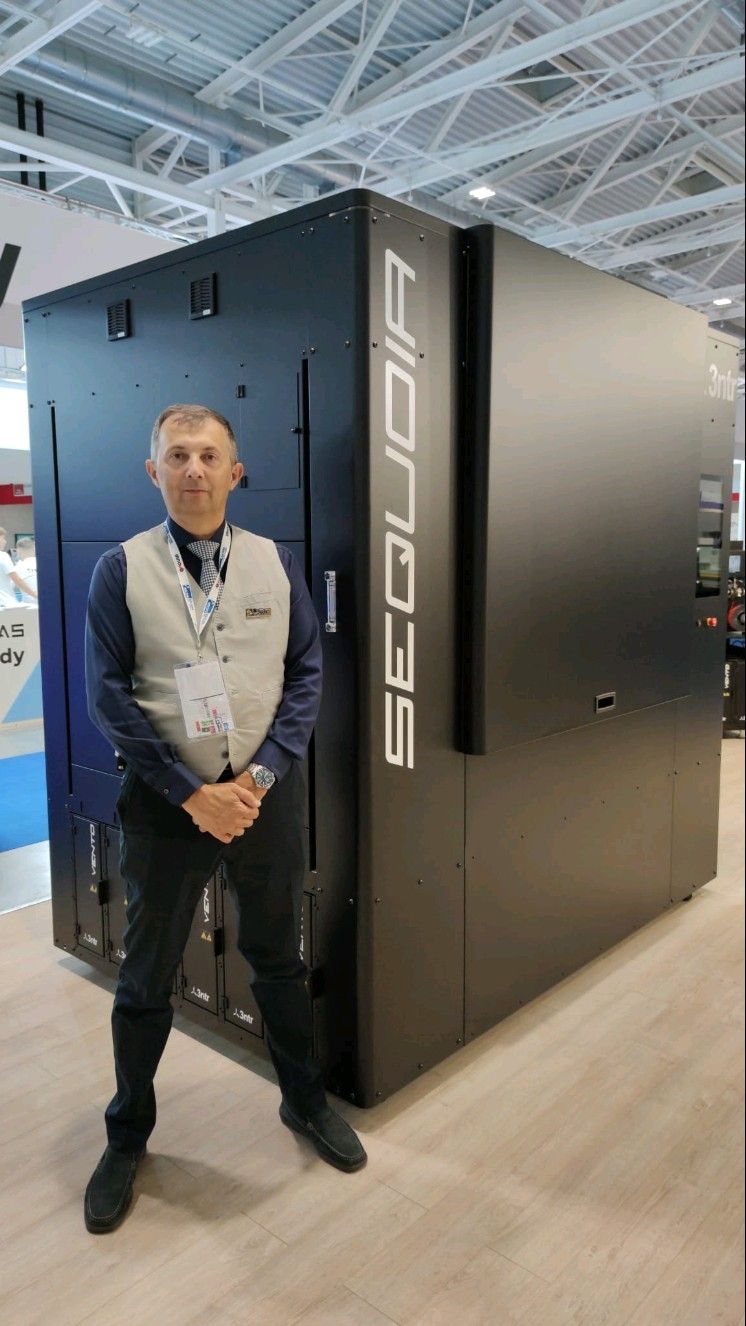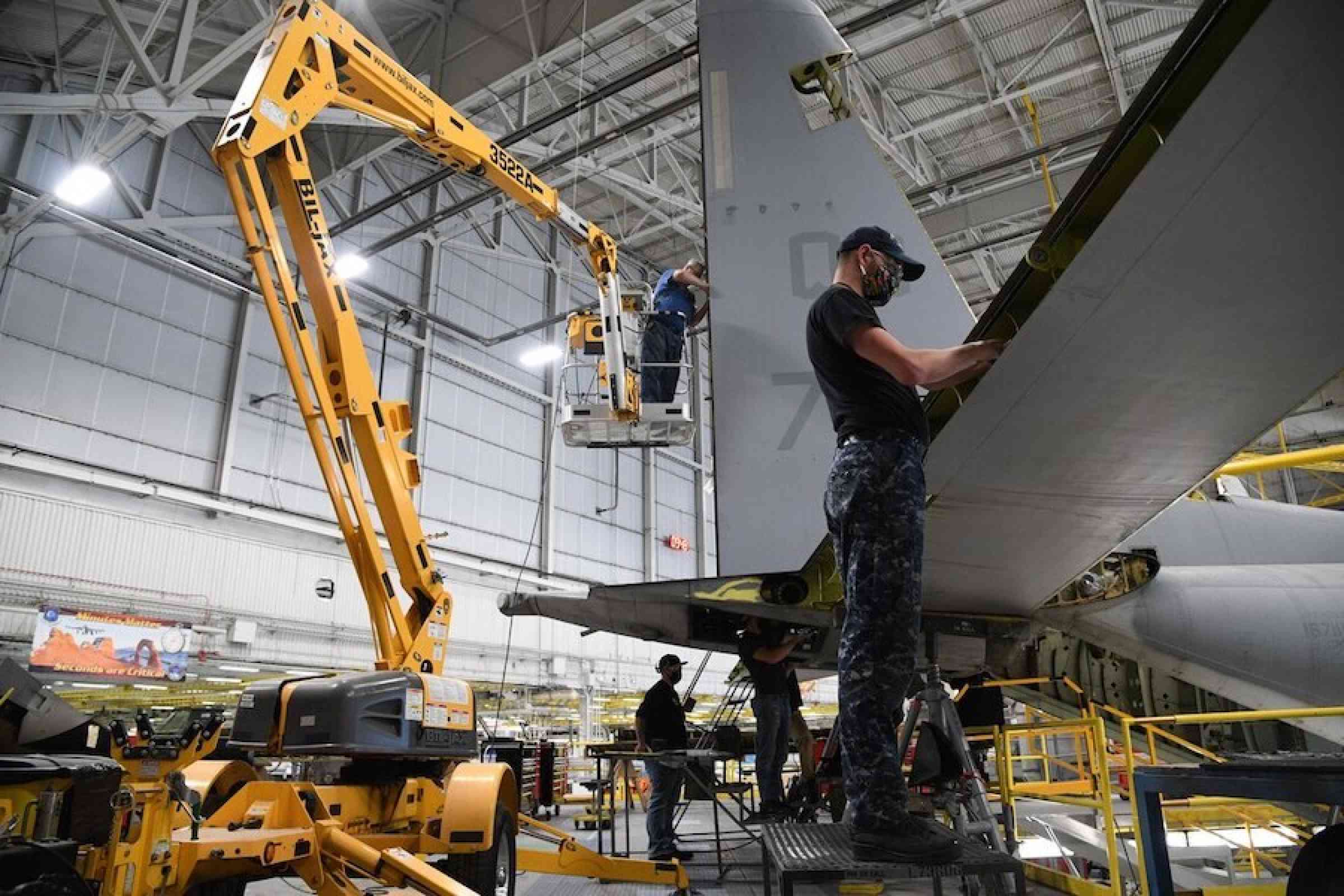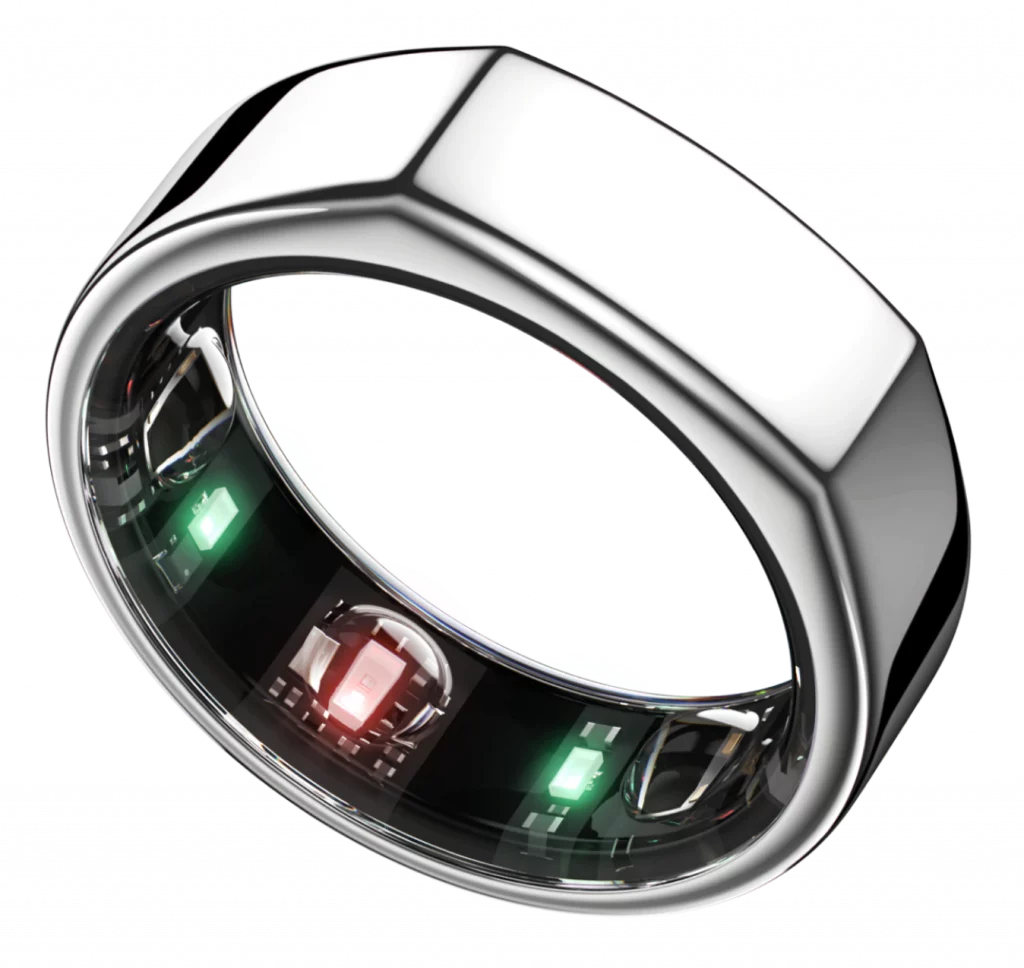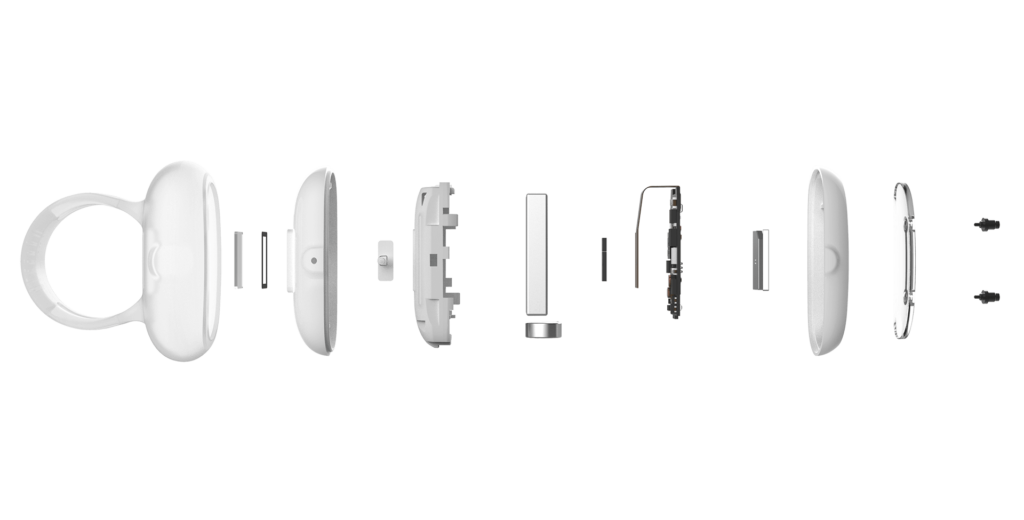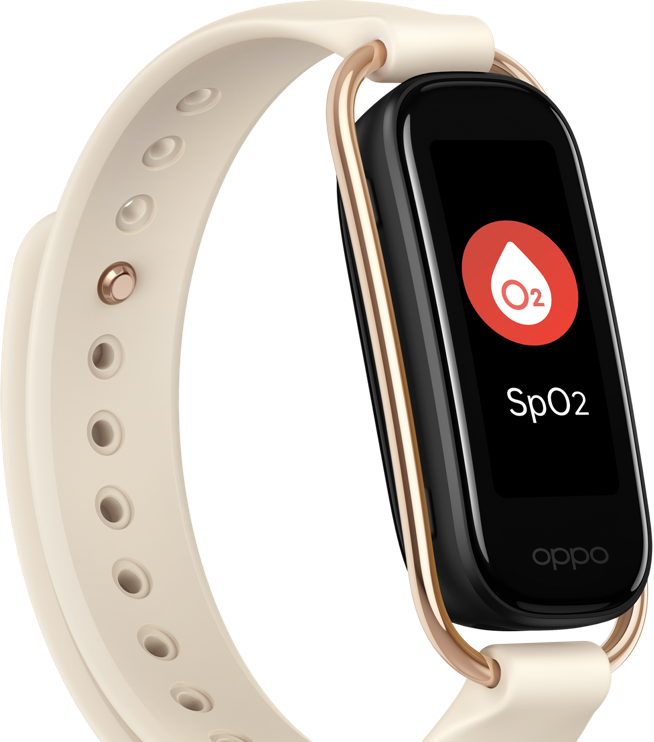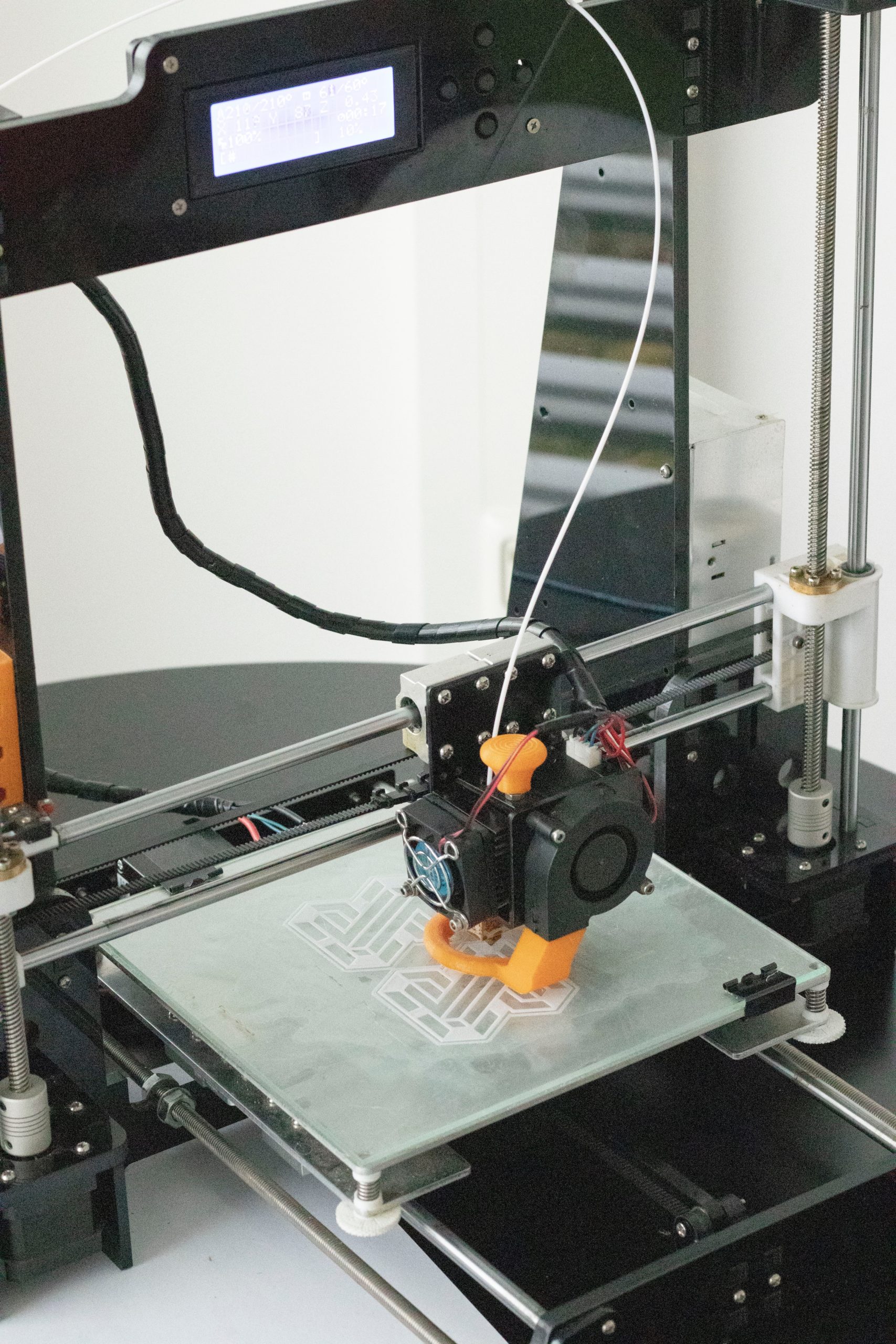3DPrint.com | The Voice of 3D Printing / Additive Manufacturing |
- Revisiting 3DPrint.com’s Stock Zone: 2022’s Bull Market Shake 3D Printing Stock Prices
- 3ntr’s New Large Format 3D Printer Features 1m x 1m Build Volume
- Biden’s AM Forward Signals that 3D Printing Is Ready for Prime Time
- New 3D Printing Industries: Connected Healthcare Devices
- The Benefits of 3D Marketplaces
| Revisiting 3DPrint.com’s Stock Zone: 2022’s Bull Market Shake 3D Printing Stock Prices Posted: 27 Jun 2022 06:30 AM PDT After a ruthless start to 2022, the US's three most widely followed indexes hit new lows as they entered the bear market terrain around mid-May. One month later, the Wall Street Journal reported that blue chips were down 18% this year, while the Nasdaq Composite has fallen 32%, and according to Deutsche Bank, the S&P 500 is currently on track for its worst half-year performance since the Great Depression. Driven primarily by high inflation, rising interest rates, a stalling economy – with likely recessions in the US and Europe – and the ongoing war in Ukraine, the global stock market outlook is uncertain. Nevertheless, some experts anticipate the current bear market will hit bottom around early 2023, although JPMorgan says shareholders should prepare for strong returns in the second half of 2022 as the US economy avoids a recession. Either way, 2022 is already seeing the worst losing streak for global stocks since the 2008 financial crisis, a "meltdown," as CNN calls it, that wiped out more than $7 trillion in market value from the blue-chip stocks in the S&P 500 alone. With global markets tanking throughout the year's first half, this might be a good time to revisit 3DPrint.com's Stocks Zone. Launched on July 27, 2021, the zone, dedicated to 3D printing stocks, is a great way to keep track of the trading and learn more about the 3D printing market activity. Aside from keeping up to date on the stock prices, readers can also find related news daily. Showcasing over 85 companies, the zone has great stock data for a glimpse into the 3D printing stock market. On the trading floor3D printing shares also reflect the downturn in 2022, following previously discussed global stock trends. For example, spearheading businesses like Stratasys (NASDAQ: SSYS), 3D Systems (NYSE: DDD), voxeljet (NASDAQ: VJET), SLM Solutions (ETR: AM3D), and Nano Dimension (NASDAQ: NNDM) saw their stock collectively stumble (See Graph 1).  Graph 1 by 3DPrint.com Graph 1 by 3DPrint.comAs the first company in the 3D printing industry to go public in October 1994, Stratasys went on to become a powerhouse and, in the process, acquired 12 companies, purchased IBM's 3D printing intellectual property and related assets and was ranked top additive manufacturing (AM) platform vendor. Trading on the Nasdaq exchange, Stratasys stock escalated between 2009 and 2014. At that time, the price was no longer oscillating in the $10 to $20 range and reached peaks of more than $120 in 2014 (as shown in Graph 2). However, its share price would later fall below $30 in 2015, and the stock price is currently in the low $20s. Even more pioneering than Stratasys is 3D Systems, a company founded three years earlier in 1986. Since then, the Rock Hill, South Carolina, firm has engineered and manufactured 3D printers, materials, and 3D scanners and is now a heavy hitter in bioprinting. The company first went public on May 27, 2014, on the New York Stock Exchange (NYSE) and has experienced peeks and troughs ever since. Stock-wise, Stratasys and 3D Systems have shared similar moves. After dropping stock prices shook the companies in 2015, the competitors kept up a similar pace until 2019. Then in 2020, 3D Systems surpassed Stratasys, reaching its pinnacle stock price of $55.3 in February 2021. This year, however, shares have suffered like the rest of Wall Street, which means both companies have declined more than 50% and are struggling to pay high earnings per share (EPS).  Graph 2 by 3DPrint.com Graph 2 by 3DPrint.comGoing publicIn the last two years, the world witnessed a rampage of companies trading in their private status for a SPAC deal to go public. These merger deals, known as SPACs, short for special purpose acquisition companies, are usually described as a back door to take a company public, and even though they have been around since the early 1990s, their popularity has soared in recent years. Many 3D printing companies followed this trend, including Desktop Metal (NYSE: DM), Markforged (NYSE: MKFG), Velo3D (NYSE: VLD), Shapeways (NYSE: SHPW), Fathom (NASDAQ: FTHM), and Fast Radius (NASDAQ: FSRD). Other companies, like Xometry (NASDAQ: XMTR) and Massivit 3D (TLV: MSVT), have chosen the regular IPO (initial public offering) route, and considering the backlash and scrutiny that SPAC deals have accumulated, experts don't believe the frenzied trend will last, and companies choosing to go public will probably do so via regular listings. The last two years gave us plenty of new 3D printing stock. But it hasn't been easy for many of these companies as they had to navigate through one of the toughest years in the global market's history. As a result, in 2022, most of them saw their stock price battered. Such as Fast Radius, which went from an opening price of $6.74 in February 2022 to having shares that now trade for pennies (43 cents on June 24, 2022). Others saw their price tank, like Desktop Metal, with a price fall of roughly 70% in its first year, from $19 in December 2020 to $5.8 a year later. Similarly, Fathom's stock price declined 78%, from $34.4 on its first trading day in 2021 to $7.51 this month. Companies like Xometry, 3D printed cultured meat maker MeaTech (NASDAQ: MITC) and Massivit 3D, which followed the traditional IPO path, also suffered the wrath of an imminent bear market in early 2022, with prices decreasing 40%, 70%, and 50% respectively. 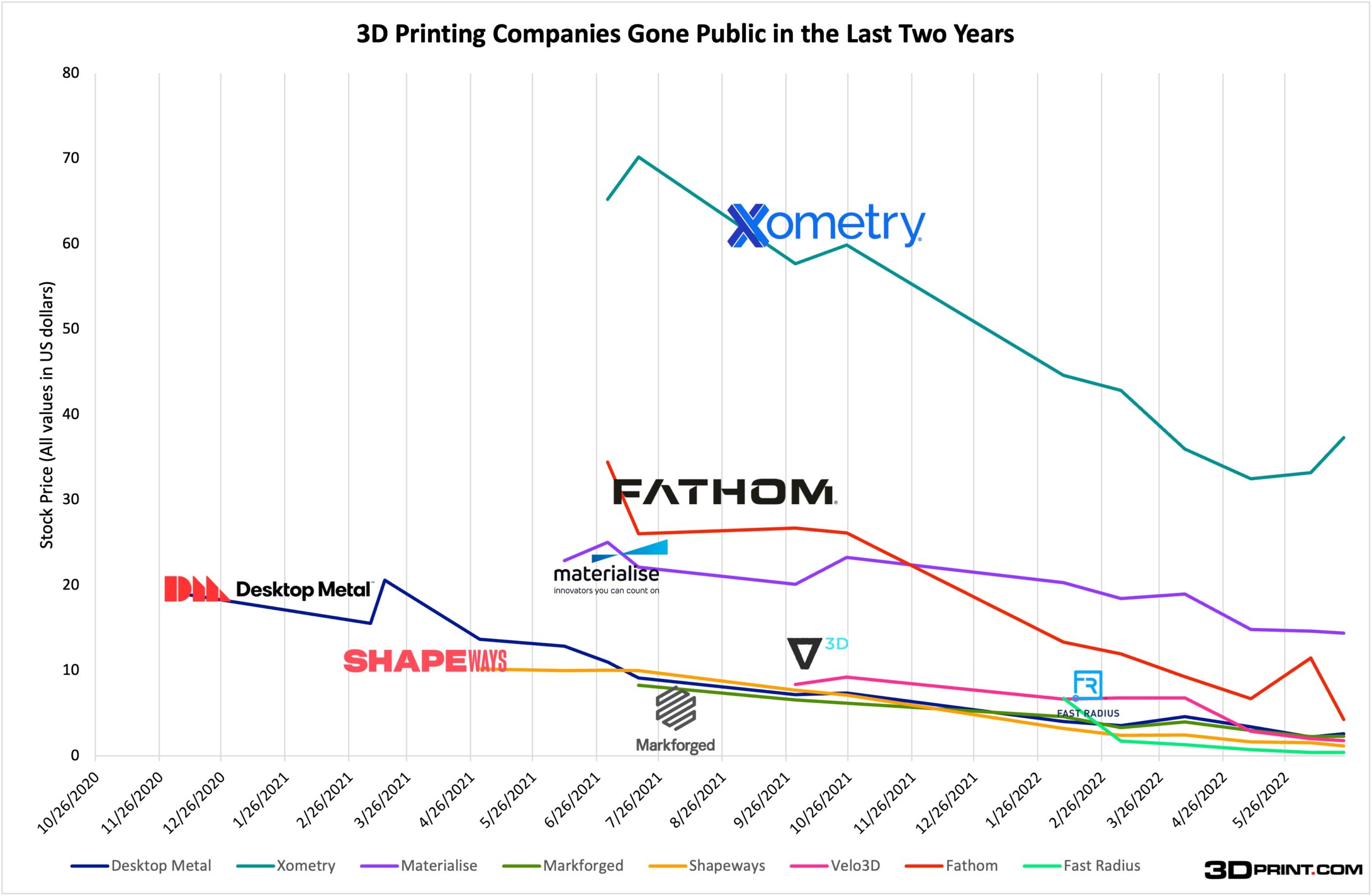 Graph 3 by 3DPrint.com Graph 3 by 3DPrint.comIn 2022, all the leading firms in the industry saw their stock prices drop. In Graph 4, we can see the price evolution for 18 companies, including bioprinting giant BICO (STO: BICO), MeaTech, and rapid prototype designer and manufacturer Materialise (NASDAQ: MTLS). Due to this market crash, innovative companies have seen their stock prices fall below $10. In fact, in Graph 4, we observe that by May 2022, 13 companies were already under the $10 gridline. But many of these companies still have plenty of upsides. For instance, Velo3D, which saw its shares at $2 on June 24, opened a European Technical Center in Augsburg, Germany, last week. Our Editor-in-chief, Joris Peels, was on-site during the inauguration and said that if the company's progress in Europe is like its work in the US, "it may soon launch like a rocket." Others, like Markforged, might be trading at a lower price-to-earnings ratio than expected. Still, the Massachusetts-based company made its first acquisition in April, taking over Teton Simulation, whose trademarked SmartSlice technology automates validation and optimizes part performance for AM applications. Since coming out of stealth mode at the SolidWorks World trade show almost a decade ago, Markforged has been on a strong growth trajectory, with an equity valuation of roughly $2 billion. Another great example is Nano Dimension, an Israeli company with shares trading at $3 but with a lot of potential, growing from a team of 80 employees to 500 in a year. 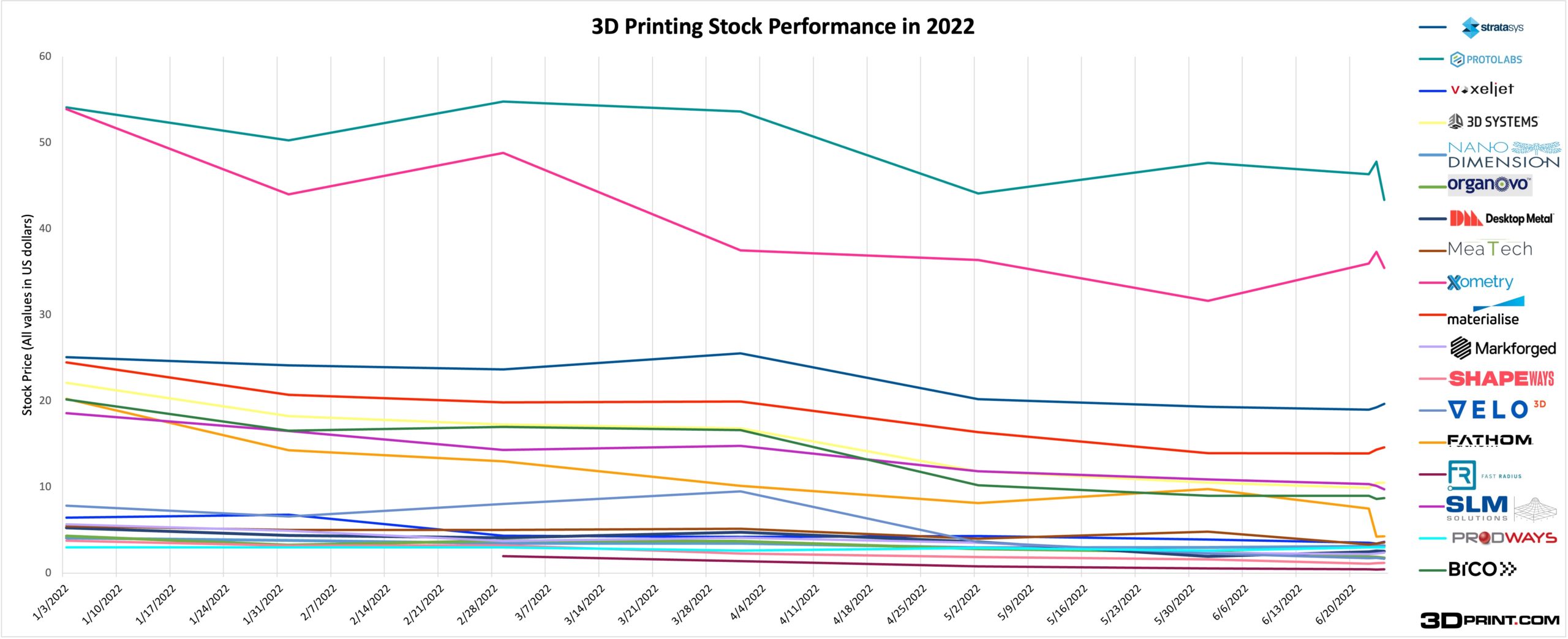 Graph 4 by 3DPrint.com Graph 4 by 3DPrint.comWith such a rough start to the year, it's challenging to determine when the market will go up. Financial planners like Warren Buffet and Jack Bogle have repeatedly assured people not to "watch the market so closely" during periods of wild fluctuation. Bogle told CNBC in 2018, "stay the course," since even "the big crisis shouldn't let you change your mind." With so much uncertainty – politically, financially, and socially – determining when the global market will recover will not be easy. However, the 3D printing industry has been launching new products, inaugurating AM centers, establishing plenty of collaborations and partnerships, and moving forward despite many hurdles, especially during the last two years of the pandemic. Hopefully, this will be enough to keep the public companies and the industry strong. The post Revisiting 3DPrint.com’s Stock Zone: 2022’s Bull Market Shake 3D Printing Stock Prices appeared first on 3DPrint.com | The Voice of 3D Printing / Additive Manufacturing. |
| 3ntr’s New Large Format 3D Printer Features 1m x 1m Build Volume Posted: 27 Jun 2022 06:00 AM PDT I’m a total 3ntr fan. We previously interviewed 3ntr CEO Davide Ardizzoia, looked at the business’s newer machines, and saw how they could 3D print oil and gas valves in PEEK. With robust frames and temperature-controlled nozzles, the Italian company’s machines are no nonsense manufacturing tools and unequivocally so. Those 3D printers have just gotten bigger. The firm has now announced the release of its new Sequoia machine, which features a build volume of one square meter. The Sequoia is the first of the firm’s V5 series. The sizable build volume can extrude multiple materials, such as soft TPU and hard ABS filaments in one print or part. Touted to have the same reliability and quality as 3ntr’s existing systems, it is aimed at the automotive, electronics, sports equipment, general industrial, and machinery markets. Under the questionable slogan ¨Sequoia: look up, think biggest!¨, the printer was launched at Mecspe 2022, a large Italian manufacturing trade show. I really believe that we’re seeing a market emerge where $300 printers will be for toying around, $2,000 printers will become quite capable, and $10,000 printers will be the in-office workstation. This leaves a bigger segment for printers that cost over $100,000, which could be super accurate, super fast, or large format. At the same time, in the future, I’d expect people to weigh their options more and choose between $300 decent and finicky entry-level machines or a single $2,000 printer that works well. At the next buying level, they might pick five $2,000 systems over a single $10,000 option. Smaller printers will give you greater flexibility and cheaper cost-per-part, but you less reliability and repeatability. The one feature that larger systems offer that smaller options can’t is access to complete, large parts, without the need for assembly.
This is especially important for applications such as formwork, aerospace tooling ,and general construction applications. I do think that these markets in and of themselves will be very relevant in the future. At the same time, markets such as outdoor advertising, molds, large prototype parts and housings are already served by similar systems. There are a lot of one-off or low-volume objects around that are less than 1m x 1m in size. 3D Systems’ purchase of Titan Robotics demonstrates that the industry stalwart truly believes in the segment, as well. If you look at the world in that way, then everyone will cannibalize everyone else in all market segments. Then, it also will be clear that, for high-tech-oriented firms, bigger is the way to go. Reliability and accuracy in large systems is very difficult to achieve. Bigger is harder, since it requires more control, a better chassis, more engineering, and more precision. Out-engineering with bigger machines is therefore the logical step. This will also eventually put a number of competitors much closer to the currently unassailable Stratasys Fortus systems. I think that true competition for large FDM parts and systems will be great for the industry. I’d also really applaud a tie up between 3ntr and a company such as Ultimaker or BCN to really give a company a full line-up of printers in order to better compete with Stratasys. The post 3ntr’s New Large Format 3D Printer Features 1m x 1m Build Volume appeared first on 3DPrint.com | The Voice of 3D Printing / Additive Manufacturing. |
| Biden’s AM Forward Signals that 3D Printing Is Ready for Prime Time Posted: 27 Jun 2022 05:30 AM PDT Before the Biden administration announced AM Forward, the last time the president of the United States mentioned additive manufacturing was back in 2013. At the time, President Barack Obama said that 3D printing had "the potential to revolutionize the way we make almost everything" in his 'State of the Union' address. Back then I was newer in the industry, and working on launching a PolyJet 3D printer as a product marketer at a different company. As we found out, while a lot of demand was created due to higher awareness, it eventually faded away as most of the capabilities at the time were focused on prototyping. At the high-end, if solutions could meet the functionality requirements, they couldn't hit the cost efficiency required for production use cases for cost-per-part versus traditional manufacturing. Fast forward almost a decade and now it's different. I'm very fortunate to be part of an amazing team in the space, focused on delivering one of the most accessible industrial grade additive manufacturing solutions. I've witnessed how additive technology has changed the way modern manufacturers think about building end-use parts and managing supply chains. Today's 3D printed parts can be relied on to solve critical high-value applications up and down the supply chain, and those of us in the additive industry are ready to help. With the right printers, materials and software, the parts created with today's additive technology are strong, making it simple to build tooling, fixtures and end-use parts for even the most tightly regulated industries. The printers themselves are faster, reliable, and produce accurate, repeatable parts at the push of a button. Digitization of manufacturing has also opened up new ways to scale 3D printing with connected point-of-need manufacturing. Now, any factory or workshop can be a digital factory. All you need to do is upload a part file to the cloud and watch as parts materialize right where you need them. Instead of waiting for tooling, which can take weeks or months to procure with traditional methods, engineers can now print and validate a part in a day or less. No more waiting around for parts. Real Applications, Real ResultsSeeing the technology come together to solve larger-scale supply chain problems has been really rewarding. My team has made this happen for countless organizations: from the U.S. Air Force and Army, to wind energy companies and aircraft manufacturers. One really cool example that comes to mind is the Project DIAMOnD initiative that we executed with Automation Alley. Together, we created the world's largest distributed manufacturing network. The local manufacturers of Michigan got access to on-site 3D printers at their own facilities to advance their industrial competitiveness and adoption of Industry 4.0 tech, in exchange for participating as critical suppliers manufacturing parts for emergency response efforts. We actually activated the network for the first time last month to print parts for tourniquet clips sent to the Ukrainian government. Without connected, distributed 3D printing, there's no way to harness the production capacity of hundreds of manufacturers in a matter of days.  Collin Fisher 533rd Commodities Maintenance Squadron works with an F-16 wing assembly aircraft part. Image Credit: Hill Air Force Base. Opportunities For Increased Adoption: Certification and CollaborationAs an industry, we have spent the last decade building our technology platforms to meet the specialized needs of modern supply chains and the parts they depend on. But we also understand that in order for additive to deeply penetrate manufacturing operations, it must be easy to integrate into existing workflows. A leading additive platform needs to be secure and include tools for part validation and certification. APIs are required to connect the data from additive systems with process management and supply chain tracking tools. And research and development in advanced composites, thermoplastics and metals give manufacturers access to the right material for even the most demanding applications. One of the most important barriers to adoptions, and a fundamental pillar in Biden's AM Forward initiative, is the creation of standards. This critical element is not going to be solved by any single industry player alone. As designed, the initiative will facilitate collaboration across many additive companies to drive the creation of standards in software, security and materials qualifications. I applaud this effort. We need to work together to establish standards for the bigger benefit of American manufacturers and consumers. We want to do our part bringing high-paying manufacturing jobs to America, bolstering our country's industrial might, and reducing inflationary pressures on domestic consumers. Standards will help our industry achieve the scale it needs to solve these problems. The Biden administration is taking the right steps to build resilient domestic supply chains while elevating manufacturing in the U.S. Better outcomes will be achieved across the board – not just for 3D printing companies, but for manufacturers of all sizes and the U.S. consumer. In the meantime, we're doing everything we can to also support the Bipartisan Innovation Act (BIA) — if we can come together and get it passed, adding a U.S. Supply Chain Office that invests in the capabilities of American manufacturers would be a monumental win for companies and consumers alike. About the Author Shai Terem has been President and CEO of Markforged and a member of its board of directors since October 2020, after having joined the company in December 2019. Prior to that, Mr. Terem served in various roles at Kornit Digital Ltd. and Stratasys; he also served in the Israeli Defense Forces. The post Biden's AM Forward Signals that 3D Printing Is Ready for Prime Time appeared first on 3DPrint.com | The Voice of 3D Printing / Additive Manufacturing. |
| New 3D Printing Industries: Connected Healthcare Devices Posted: 27 Jun 2022 05:00 AM PDT The confluence of data, healthcare, software, private enterprise, and personalized healthcare devices will be a powerful one. Your Fitbit, smartphone or Apple Watch, will be interconnected with your fitness apps, to your doctor, to your insurer, your health, and your view of your own health. You will have up-to-the-minute access to your pulse, number of steps walked, time spent sleeping, and a great deal more. It is yet unknown who else will have access to this data. Would you share it with Apple, Google, your insurer? Will your doctor download the data so they can look at it? Or will the data sensor array that we carry day to day subsist as a completely parallel system? Will you be able to share it with your personal trainer? Or will we all share it with friends? Or will we see this as an intensely personal affair? We know that new phones and watches will be able to look at blood pressure and oxygenation, but where will it all end? This we can’t yet know. Google, Apple and a plethora of startups are jockeying for a position as your provider of healthcare data. Who will rule and what the rules will be are not known. The wearables market is estimated to be $115.8B in 2021 and could grow to $380.5B by 2028. The fitness tracker market is perhaps worth $34 billion a year. On the device side, aside from the leading US companies, Samsung and Chinese giants such as Oppo and Xiaomi are in the mix, selling tracking-capable devices from $19 to $400. Additionally, there are products such as the Oura Ring, a variety of sleep trackers, Whitings’ ECG tracker, and other wearable bionsensors. The potential for these devices is huge. OECD countries have an obesity rate of between four and 40 percent. 70 percent of Americans don’t think that they sleep properly one day a month, while 11 percent say they don’t sleep properly ever. 60 percent of U.S. adults don’t exercise enough. Apps, sensors, and phones could reduce that significantly given the right incentives and capabilities. What’s more, in an increasingly confusing world, we could find certainty and pace in the knowability of the amount of steps we walk or the interconnected small improvements that our programs can check. However, imagine how software could be used to study human health by monitoring people in their millions. Picture how we could test the efficacy of exercise or diet so much more accurately through tracking a million apps. The recency of the information and the size of the cohorts would be larger than almost any study to date. Imagine if apps could transfer the latest in algorithms and that amazing AI stuff and mix it together with cutting edge tested health advice to give millions of people better outcomes. This could be a very large business and have significant effects on global health. With over 6.4 billion people owning a cell phone, this could be a global, shared industry that could be a part of most peoples lives.
The health, daily life, years of life, and financial impact could be immense. With such big numbers and a big impact, our role in 3D printing Connected Healthcare Devices need only be small for it to be very valuable. We think of medical 3D printing in terms of orthopedics, surgical guides, medical models, 3D printing in hospitals, and bioprinting. At times, we look at such items as surgical instruments and medical packaging. But, there are more valuable applications out there that we don’t consider often. We learned during the COVID pandemic that we could make production aids, molds for medical products, PPE and the like. However, Connected Healthcare Devices provide a completely new, hereto unloved and overlooked application for 3D printing. PrototypingIn prototyping, this business is a huge opportunity that has not been sufficiently covered. There are 500 startups in fitness bands alone. There are also at least 64 IoT healthcare monitoring companies as well. This is a plum opportunity for OEMs and service bureaus that has not been addressed. Small SeriesUsually we contrast additive manufacturing with mass manufacturing, particularly injection molding. However, for startups, we can augment traditional production not only through making individual and batches of prototypes, but also to make small, end part series. This could either be done via 3D printing alone or molding with 3D printed mold tooling. This would allow startups to inexpensively produce series of 50 to 500 devices relatively inexpensively, in turn enabling them go to market quicker or test with many clients to improve fit and functionality. With such a competitive market, months could mean much to the players in it. At the same time, having a better product more accurately designed for its purpose would save a lot of money. Multiple SizesThese connected devices often benefit from being conformal to the body. This means that they will have curves that make them more complex and expensive to produce. What’s more, these curves could be much more comfortable if they were available in several sizes. With 3D printing, we could directly or indirectly, via molding, produce many more devices to satisfy the diverse size variations found in users. In turn, these devices could be made more comfortable with 3D printing. 3D Printed ElectronicsConformal and curved devices would also pose a challenge for components such as antennas and batteries. Using additive, we could 3D print conformal batteries and antenna, while extending their functionality. An antenna could be curved to follow the shape of the wrist. It could bend to avoid a microprocessor, and also feature a hole to act as a fastener. This would enable more form factors and also reduce the size of the components, overall. Similarly 3D printed sensors themselves could also play a part in making these devices lighter and more functional. Mass manufacturing 3D printed antenna via aerosol jet has been proven and may be industrialized for this. Reduce MassGenerally, we could reduce component mass using 3D printing to enable these devices to be conformal, smaller, lighter, or more unobtrusive. This is a decided advantage in these produces, since they are meant to be worn during strenuous exercise, all day, or both. Fitness bands, in particular, also have to squeeze a lot of functionality into a small form factor. Products such as rings will also have a number of issues cramming all the tech in to make the device work. Less Vulnerable Supply ChainsAdditive increasingly makes sense when we consider the extended, brittle supply chains, as well as vulnerable tooling, end use parts, and mold components. Companies may forgo margin in order to reduce a dependency on a supplier or to accelerate market entry, even though the component would be more expensive with 3D printing. Making Them FashionableThese devices could become fashion goods, which would mean that many variants, colors, and versions would become the norm. This would make more 3D printed end use parts possible. Mass CustomizationAs very personal fashion items, these devices would be ideal for mass customization. Mass customization and 3D printing could play very well together, allowing customers to design their own emotive, lifestyle-matching, unique devices to better fit their lives. All in all, I believe that we will see a huge potential opportunity for 3D printing in connected healthcare devices emerge shortly. It is yours for the taking. The post New 3D Printing Industries: Connected Healthcare Devices appeared first on 3DPrint.com | The Voice of 3D Printing / Additive Manufacturing. |
| The Benefits of 3D Marketplaces Posted: 27 Jun 2022 04:30 AM PDT 3D model marketplaces have continued to rise in popularity as more and more 3D models are being designed to address particular problems. These models are solving problems in a wide range of industries, such as product development, gaming, movies, art and many more…”. The 3D printed parts can also then be sold to the public whether you print them or have a service provider like JawsTec do it. Finding the right 3D model can be difficult sometimes. Being able to trust the site and modeler is important. JawsTec is now offering their 3D Model Marketplace for all users and allows reviews and comments to better determine the quality of project and maker. Selling 3D printable models is a promising way to make a profit and offer people products that just can't be found anywhere else. While there are many options out there, few of them have embraced the possibilities of 3D model NFTs. A 3D Model Marketplace dedicated to the NFT space allows CAD sales, physical sales, and NFT ownership. The ease of purchase allows for a modeler to reach a variety of customers in different niches. Some models can be exclusive NFTs, while others are practical models for print. This means that you as a 3D modeler are not trapping yourself into one kind of sales type or another and it also allows for you to manage all your sales on one, easy-to-use online platform instead of tracking multiple sites that all work differently. JawsTec's 3D Model Marketplace is designed to be easy to use for both sellers and customers. Selling NFTs and other 3D models could be used to get funding before a project even fully launches. Royalties from sold models are given to the model maker, game developer, animator, or designer who posts them to the marketplace. It's also a great tool for marketing, as it can help develop interest, customer trust, and good word of mouth. What's truly unique about NFTs purchased on JawsTec's 3D Model Marketplace is that, when ordered, the design will be sent to our high-quality 3D printers to be printed and shipped to the customer so they can have a physical model to go with their digital NFT. It might even serve as a proof of concept so that they can use or sell the 3D model they have bought the right to. All models sold on the Jawstec 3D Model Marketplace will be reviewed by our expert team to ensure they can be printed. This basic level of quality control helps ensure customer trust and prevent easily missed errors that could break that trust. Jawstec brings the same level of care and craftsmanship to small projects as we do for our work with industry leaders like Tesla, SpaceX, and Apple. As the full possibility of 3D model NFTs develops, we look forward to being a part of that development. Please sign up here as we prepare to launch. The post The Benefits of 3D Marketplaces appeared first on 3DPrint.com | The Voice of 3D Printing / Additive Manufacturing. |
| You are subscribed to email updates from 3DPrint.com | The Voice of 3D Printing / Additive Manufacturing. To stop receiving these emails, you may unsubscribe now. | Email delivery powered by Google |
| Google, 1600 Amphitheatre Parkway, Mountain View, CA 94043, United States | |
